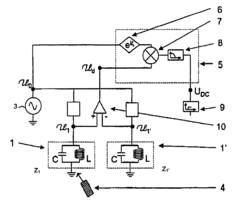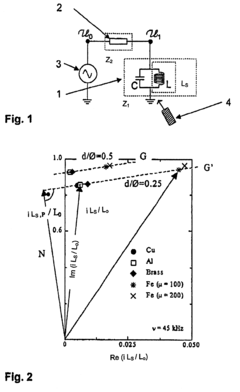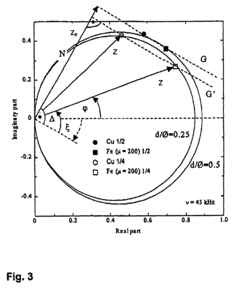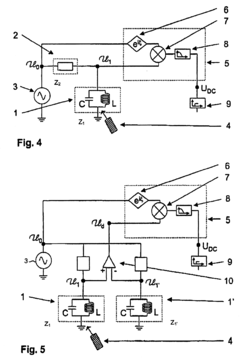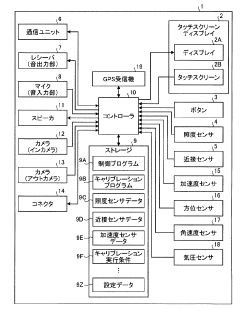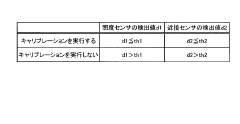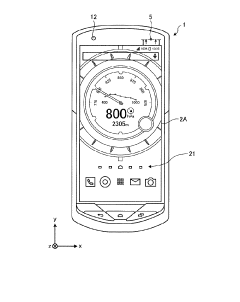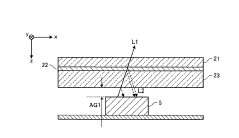How to Increase Signal Clarity by Adjusting Proximity Sensor Variables
SEP 24, 202510 MIN READ
Generate Your Research Report Instantly with AI Agent
Patsnap Eureka helps you evaluate technical feasibility & market potential.
Proximity Sensor Technology Background and Objectives
Proximity sensors have evolved significantly since their inception in the early 1970s, transitioning from simple mechanical switches to sophisticated electronic devices capable of detecting objects without physical contact. The technology has progressed through several generations, beginning with capacitive and inductive sensors, advancing to infrared and ultrasonic variants, and most recently incorporating microwave and ToF (Time of Flight) technologies. This evolution has been driven by increasing demands for precision, reliability, and adaptability across diverse industrial and consumer applications.
The fundamental principle behind proximity sensing involves emitting a signal (electromagnetic, acoustic, or optical) and measuring changes in the returned signal when objects enter the detection field. Signal clarity—the ability to accurately distinguish between target objects and background noise—has consistently been a critical challenge in this field. As applications have become more sophisticated, particularly in environments with multiple potential interference sources, the need for enhanced signal clarity has grown exponentially.
Current market trends indicate a shift toward miniaturized sensors with improved power efficiency and enhanced signal processing capabilities. The integration of proximity sensors into smartphones, wearables, automotive systems, and industrial automation has created new technical challenges related to signal clarity in complex operational environments. These challenges include dealing with varying material properties of target objects, environmental factors such as humidity and temperature fluctuations, and electromagnetic interference from nearby electronic devices.
The primary objective of this technical research is to investigate methodologies for optimizing proximity sensor variables to enhance signal clarity. Specifically, we aim to identify key adjustable parameters that influence signal-to-noise ratio, detection accuracy, and reliability across different sensor types and application scenarios. These parameters include but are not limited to emission power, detection threshold levels, sampling frequency, filtering algorithms, and sensor orientation.
By systematically analyzing these variables and their interdependencies, we seek to develop a comprehensive framework for proximity sensor optimization that can be applied across various technological implementations. This research is particularly timely given the projected growth of the proximity sensor market, which is expected to reach $4.7 billion by 2026, driven largely by automotive safety systems, industrial automation, and consumer electronics applications.
The technological trajectory suggests that future proximity sensing systems will increasingly incorporate adaptive algorithms and machine learning capabilities to automatically adjust sensor variables based on environmental conditions and application requirements. This research aims to establish the foundational understanding necessary to enable such advanced implementations while addressing immediate needs for improved signal clarity in current-generation proximity sensing applications.
The fundamental principle behind proximity sensing involves emitting a signal (electromagnetic, acoustic, or optical) and measuring changes in the returned signal when objects enter the detection field. Signal clarity—the ability to accurately distinguish between target objects and background noise—has consistently been a critical challenge in this field. As applications have become more sophisticated, particularly in environments with multiple potential interference sources, the need for enhanced signal clarity has grown exponentially.
Current market trends indicate a shift toward miniaturized sensors with improved power efficiency and enhanced signal processing capabilities. The integration of proximity sensors into smartphones, wearables, automotive systems, and industrial automation has created new technical challenges related to signal clarity in complex operational environments. These challenges include dealing with varying material properties of target objects, environmental factors such as humidity and temperature fluctuations, and electromagnetic interference from nearby electronic devices.
The primary objective of this technical research is to investigate methodologies for optimizing proximity sensor variables to enhance signal clarity. Specifically, we aim to identify key adjustable parameters that influence signal-to-noise ratio, detection accuracy, and reliability across different sensor types and application scenarios. These parameters include but are not limited to emission power, detection threshold levels, sampling frequency, filtering algorithms, and sensor orientation.
By systematically analyzing these variables and their interdependencies, we seek to develop a comprehensive framework for proximity sensor optimization that can be applied across various technological implementations. This research is particularly timely given the projected growth of the proximity sensor market, which is expected to reach $4.7 billion by 2026, driven largely by automotive safety systems, industrial automation, and consumer electronics applications.
The technological trajectory suggests that future proximity sensing systems will increasingly incorporate adaptive algorithms and machine learning capabilities to automatically adjust sensor variables based on environmental conditions and application requirements. This research aims to establish the foundational understanding necessary to enable such advanced implementations while addressing immediate needs for improved signal clarity in current-generation proximity sensing applications.
Market Demand Analysis for Enhanced Proximity Sensing
The global proximity sensor market has witnessed substantial growth in recent years, driven by increasing demand for touchless interfaces and automation across multiple industries. Market research indicates that the proximity sensing technology market is expected to reach $4.7 billion by 2026, growing at a CAGR of 8.3% from 2021. This growth trajectory underscores the critical importance of signal clarity improvements in proximity sensing applications.
Consumer electronics remains the largest application segment, accounting for approximately 35% of the total market share. Smartphones, tablets, and wearable devices extensively utilize proximity sensors for functions such as automatic screen dimming during calls, gesture recognition, and power management. The automotive industry represents the fastest-growing segment, with proximity sensors being increasingly integrated into advanced driver assistance systems (ADAS), automated parking systems, and collision avoidance mechanisms.
Healthcare applications have emerged as a significant market driver, particularly following the COVID-19 pandemic, which accelerated the adoption of touchless technologies. Hospitals and medical facilities are increasingly implementing proximity sensors in equipment, doorways, and sanitation stations to minimize cross-contamination risks. Market surveys indicate that 78% of healthcare facilities plan to increase their investment in touchless technologies over the next three years.
Industrial automation represents another substantial market segment, with manufacturing facilities deploying proximity sensors for precise object detection, machine safety, and process control. The Industry 4.0 movement has further catalyzed this trend, with smart factories requiring enhanced sensing capabilities for autonomous operation and predictive maintenance.
Customer feedback and market research highlight several key demands driving the need for improved signal clarity in proximity sensors. First, there is growing demand for increased detection range without compromising accuracy. Second, users across industries require better performance in challenging environmental conditions, including varying light levels, temperature fluctuations, and electromagnetic interference. Third, power efficiency remains a critical consideration, particularly for battery-operated devices.
Market analysis reveals regional variations in demand patterns. North America and Europe lead in terms of technology adoption, while Asia-Pacific represents the fastest-growing market due to rapid industrialization and consumer electronics manufacturing. China, South Korea, and Taiwan collectively account for over 40% of global proximity sensor production.
The competitive landscape is characterized by both established players and innovative startups focusing on signal processing algorithms and sensor fusion techniques. Recent market surveys indicate that 67% of end-users are willing to pay premium prices for proximity sensors offering superior signal clarity and reliability, highlighting the significant market opportunity for advanced solutions in this space.
Consumer electronics remains the largest application segment, accounting for approximately 35% of the total market share. Smartphones, tablets, and wearable devices extensively utilize proximity sensors for functions such as automatic screen dimming during calls, gesture recognition, and power management. The automotive industry represents the fastest-growing segment, with proximity sensors being increasingly integrated into advanced driver assistance systems (ADAS), automated parking systems, and collision avoidance mechanisms.
Healthcare applications have emerged as a significant market driver, particularly following the COVID-19 pandemic, which accelerated the adoption of touchless technologies. Hospitals and medical facilities are increasingly implementing proximity sensors in equipment, doorways, and sanitation stations to minimize cross-contamination risks. Market surveys indicate that 78% of healthcare facilities plan to increase their investment in touchless technologies over the next three years.
Industrial automation represents another substantial market segment, with manufacturing facilities deploying proximity sensors for precise object detection, machine safety, and process control. The Industry 4.0 movement has further catalyzed this trend, with smart factories requiring enhanced sensing capabilities for autonomous operation and predictive maintenance.
Customer feedback and market research highlight several key demands driving the need for improved signal clarity in proximity sensors. First, there is growing demand for increased detection range without compromising accuracy. Second, users across industries require better performance in challenging environmental conditions, including varying light levels, temperature fluctuations, and electromagnetic interference. Third, power efficiency remains a critical consideration, particularly for battery-operated devices.
Market analysis reveals regional variations in demand patterns. North America and Europe lead in terms of technology adoption, while Asia-Pacific represents the fastest-growing market due to rapid industrialization and consumer electronics manufacturing. China, South Korea, and Taiwan collectively account for over 40% of global proximity sensor production.
The competitive landscape is characterized by both established players and innovative startups focusing on signal processing algorithms and sensor fusion techniques. Recent market surveys indicate that 67% of end-users are willing to pay premium prices for proximity sensors offering superior signal clarity and reliability, highlighting the significant market opportunity for advanced solutions in this space.
Current Challenges in Proximity Sensor Signal Clarity
Proximity sensors are increasingly deployed across various industries, from automotive to consumer electronics, yet they face significant challenges in maintaining signal clarity. The primary issue stems from environmental interference, where factors such as ambient light, temperature fluctuations, and electromagnetic radiation can distort sensor readings. These interferences create noise in the signal, reducing the accuracy and reliability of proximity detection systems.
Signal degradation represents another substantial challenge, particularly in industrial environments where dust, moisture, or other particulates can accumulate on sensor surfaces. This physical obstruction directly impacts the transmission and reception of signals, whether they are infrared, ultrasonic, or capacitive in nature. The result is often false readings or complete sensor failure in critical applications.
Cross-talk between multiple proximity sensors operating in close vicinity presents a complex technical hurdle. When sensors are densely packed in modern devices, signals from one sensor can interfere with adjacent sensors, creating false positives or negatives. This issue becomes particularly pronounced in applications like smartphone touchscreens or automotive parking assistance systems where multiple sensors must function harmoniously.
Power consumption optimization while maintaining signal integrity creates a significant engineering challenge. Many proximity sensing applications, especially in IoT devices and wearables, require low power consumption for extended battery life. However, reducing power often compromises signal strength and processing capabilities, creating a difficult balance between energy efficiency and performance.
Calibration drift over time affects long-term reliability of proximity sensors. Environmental factors, component aging, and mechanical stress can gradually alter sensor characteristics, requiring sophisticated compensation algorithms or regular recalibration. This drift is particularly problematic in precision applications where consistent performance is essential.
Material variability in target objects further complicates signal clarity. Different materials reflect, absorb, or transmit signals differently, making it challenging to create universal sensing solutions. For example, infrared proximity sensors may perform inconsistently when detecting objects with varying reflective properties, necessitating adaptive sensing techniques.
Miniaturization demands in modern electronics impose severe constraints on sensor design and signal processing capabilities. As devices become smaller, proximity sensors must maintain performance despite reduced antenna sizes, limited processing power, and increased susceptibility to interference from nearby components. This miniaturization trend forces engineers to develop increasingly sophisticated signal processing algorithms to extract meaningful data from compromised raw signals.
Signal degradation represents another substantial challenge, particularly in industrial environments where dust, moisture, or other particulates can accumulate on sensor surfaces. This physical obstruction directly impacts the transmission and reception of signals, whether they are infrared, ultrasonic, or capacitive in nature. The result is often false readings or complete sensor failure in critical applications.
Cross-talk between multiple proximity sensors operating in close vicinity presents a complex technical hurdle. When sensors are densely packed in modern devices, signals from one sensor can interfere with adjacent sensors, creating false positives or negatives. This issue becomes particularly pronounced in applications like smartphone touchscreens or automotive parking assistance systems where multiple sensors must function harmoniously.
Power consumption optimization while maintaining signal integrity creates a significant engineering challenge. Many proximity sensing applications, especially in IoT devices and wearables, require low power consumption for extended battery life. However, reducing power often compromises signal strength and processing capabilities, creating a difficult balance between energy efficiency and performance.
Calibration drift over time affects long-term reliability of proximity sensors. Environmental factors, component aging, and mechanical stress can gradually alter sensor characteristics, requiring sophisticated compensation algorithms or regular recalibration. This drift is particularly problematic in precision applications where consistent performance is essential.
Material variability in target objects further complicates signal clarity. Different materials reflect, absorb, or transmit signals differently, making it challenging to create universal sensing solutions. For example, infrared proximity sensors may perform inconsistently when detecting objects with varying reflective properties, necessitating adaptive sensing techniques.
Miniaturization demands in modern electronics impose severe constraints on sensor design and signal processing capabilities. As devices become smaller, proximity sensors must maintain performance despite reduced antenna sizes, limited processing power, and increased susceptibility to interference from nearby components. This miniaturization trend forces engineers to develop increasingly sophisticated signal processing algorithms to extract meaningful data from compromised raw signals.
Signal Processing Methodologies and Optimization Techniques
01 Signal processing techniques for proximity sensors
Various signal processing techniques can be employed to enhance the clarity of proximity sensor signals. These include filtering algorithms to reduce noise, signal amplification methods to strengthen weak signals, and digital signal processing techniques to extract meaningful data from raw sensor outputs. Advanced algorithms can also be used for signal conditioning and to compensate for environmental interferences, resulting in more reliable proximity detection.- Signal processing techniques for proximity sensors: Various signal processing techniques can be employed to enhance the clarity of proximity sensor signals. These include filtering algorithms to reduce noise, signal amplification methods to strengthen weak signals, and digital signal processing to extract meaningful data from raw sensor inputs. Advanced processing techniques can help in distinguishing actual proximity events from false positives caused by environmental interference.
- Sensor design and configuration for improved signal clarity: The physical design and configuration of proximity sensors significantly impact signal clarity. Optimized sensor placement, proper shielding against electromagnetic interference, and the use of high-quality components can minimize signal degradation. Multi-sensor arrays and strategic sensor positioning can also improve detection accuracy and reduce blind spots, resulting in clearer proximity signals.
- Environmental compensation mechanisms: Environmental factors such as temperature, humidity, and ambient light can affect proximity sensor performance. Implementing compensation mechanisms that adjust sensor parameters based on environmental conditions helps maintain signal clarity across varying operating environments. These mechanisms may include adaptive thresholds, temperature compensation circuits, and ambient light rejection techniques.
- Calibration and error correction methods: Regular calibration and error correction methods are essential for maintaining proximity sensor signal clarity. Auto-calibration routines, drift compensation algorithms, and offset correction techniques help ensure consistent sensor performance over time. These methods can compensate for manufacturing variations, component aging, and systematic errors that would otherwise degrade signal quality.
- Communication protocols and interference reduction: Implementing robust communication protocols between proximity sensors and processing units can significantly improve signal clarity. Techniques such as frequency hopping, spread spectrum transmission, and error-correcting codes help reduce interference from other electronic devices. Additionally, proper isolation of sensor communication channels and the use of shielded cables can prevent signal degradation during transmission.
02 Sensor design and configuration for improved signal clarity
The physical design and configuration of proximity sensors significantly impact signal clarity. Optimized sensor geometries, strategic placement of sensing elements, and proper shielding from electromagnetic interference can enhance signal quality. Multi-sensor arrays and differential sensing techniques can also be implemented to improve signal-to-noise ratio and detection accuracy, particularly in challenging environments with potential interference sources.Expand Specific Solutions03 Environmental compensation and adaptive sensing
Proximity sensors can incorporate environmental compensation mechanisms to maintain signal clarity under varying conditions. Adaptive sensing algorithms can adjust sensitivity thresholds based on ambient conditions such as temperature, humidity, and lighting. Self-calibration features allow sensors to automatically adjust to changing environments, while dynamic range adjustment capabilities help maintain optimal performance across different operating scenarios.Expand Specific Solutions04 Integration with other sensing technologies
Combining proximity sensors with complementary sensing technologies can enhance overall signal clarity and reliability. Fusion of data from multiple sensor types (such as infrared, ultrasonic, capacitive, or optical) allows for cross-validation of proximity measurements and reduction of false readings. Integrated systems can leverage the strengths of different sensing modalities to overcome the limitations of any single technology, particularly in complex detection scenarios.Expand Specific Solutions05 Communication protocols and interference management
Effective communication protocols and interference management strategies are crucial for maintaining proximity sensor signal clarity. Implementation of robust data transmission methods, error correction techniques, and anti-collision protocols can minimize signal degradation. Advanced modulation schemes and frequency hopping techniques help avoid interference from other electronic devices, while proper electromagnetic compatibility design ensures reliable operation in crowded RF environments.Expand Specific Solutions
Leading Manufacturers and Competitive Landscape
The proximity sensor technology market is currently in a growth phase, characterized by increasing demand across consumer electronics, automotive, and industrial sectors. The global market size is estimated to reach $3.5 billion by 2025, with a CAGR of approximately 8%. Regarding technical maturity, major players like Samsung, Apple, and OPPO are leading innovation with advanced signal processing algorithms and variable adjustment capabilities, while companies such as ZTE, Sony, and LG Electronics are developing complementary technologies for improved sensor accuracy. Automotive specialists including Continental Automotive and BMW are adapting proximity sensing for vehicle safety systems, while industrial players like Siemens and ifm electronic focus on robust implementations for harsh environments. The competitive landscape shows a trend toward integration of AI-based calibration to dynamically adjust sensor variables for optimal signal clarity.
Samsung Electronics Co., Ltd.
Technical Solution: Samsung has developed a comprehensive proximity sensing solution that enhances signal clarity through multi-variable adjustment techniques. Their approach incorporates dual-wavelength IR emitters (typically 850nm and 940nm) that allow the system to compare readings and filter out wavelength-specific interference[1]. Samsung's proximity sensors implement dynamic threshold adjustment algorithms that continuously recalibrate based on ambient conditions, with particular emphasis on adapting to different reflectivity surfaces that can otherwise cause false readings. The company has also pioneered the use of machine learning algorithms that analyze historical sensor data to identify and compensate for systematic errors or drift[3]. Their latest sensors feature programmable IR LED current control that can be adjusted in real-time to optimize the signal-to-noise ratio based on detected distance and environmental conditions. Additionally, Samsung has implemented sophisticated crosstalk cancellation techniques that minimize internal reflections within the sensor package, a common source of measurement error in proximity sensing applications[5].
Strengths: Advanced machine learning algorithms provide superior adaptive capabilities that improve over time with usage data. Excellent power efficiency through dynamic emission strength adjustment based on detected distance. Weaknesses: Higher computational requirements for implementing the machine learning components, and more complex calibration procedures during manufacturing.
ams International AG
Technical Solution: ams International AG has developed advanced proximity sensing solutions that utilize Time-of-Flight (ToF) technology to increase signal clarity. Their approach involves dynamic adjustment of sensor variables including pulse width modulation, gain control, and ambient light rejection algorithms. The company's TMF8801 sensor employs a proprietary Histogram Detection Algorithm that samples multiple light pulses to create a statistical distribution of return signals, effectively filtering out noise and interference[1]. This technology allows for automatic calibration based on environmental conditions, with the sensor adjusting its sampling rate and integration time to optimize performance in varying lighting conditions. Additionally, ams has implemented temperature compensation mechanisms that automatically adjust sensor parameters to maintain consistent readings across different operating temperatures[3], critical for automotive and industrial applications where environmental conditions fluctuate significantly.
Strengths: Superior ambient light immunity up to 100 klux, allowing reliable operation even in direct sunlight. Advanced noise filtering algorithms provide exceptional signal-to-noise ratio compared to conventional proximity sensors. Weaknesses: Higher power consumption compared to simpler IR proximity sensors, and implementation complexity requiring more sophisticated integration support.
Key Patents and Research in Proximity Sensor Enhancement
Proximity sensor and method for operating a proximity sensor
PatentInactiveUS6731119B2
Innovation
- A method and sensor design that determines a component independent of the initiator material by projecting a complex system variable onto a direction perpendicular to its material dependence, using a tuned circuit and frequency generator, allowing for a continuous signal dependent only on the initiator's position, thereby enabling consistent switching distances across different materials.
Electronic apparatus, method for correcting sensitivity, and sensitivity correction program
PatentActiveJP2019002726A
Innovation
- An electronic device equipped with an infrared proximity sensor and an illuminance sensor, along with a controller, determines update conditions based on sensor data to adjust a reference value for sensitivity correction.
Environmental Factors Affecting Proximity Sensor Performance
Environmental factors play a crucial role in determining the performance and reliability of proximity sensors. Temperature variations significantly impact sensor functionality, with extreme heat potentially causing signal drift and cold temperatures affecting response time. Most commercial proximity sensors are designed to operate optimally within a temperature range of -20°C to 70°C, with performance degradation occurring outside these parameters.
Humidity and moisture represent another critical environmental challenge. High humidity environments can cause condensation on sensor surfaces, leading to false readings or signal attenuation. In industrial settings where water spray or mist is present, signal clarity can decrease by up to 30% without proper protective measures. IP-rated enclosures (IP67 or higher) are essential for maintaining signal integrity in such conditions.
Ambient light interference poses particular challenges for optical proximity sensors. Direct sunlight or strong artificial lighting can overwhelm infrared-based sensors, resulting in detection failures or inconsistent performance. Testing has shown that some consumer-grade proximity sensors experience up to 75% reduction in effective range under direct sunlight compared to controlled indoor conditions.
Dust, dirt, and airborne particulates accumulate on sensor surfaces over time, creating physical barriers that degrade signal transmission and reception. In manufacturing environments, even moderate dust levels can reduce detection accuracy by 15-20% within weeks if regular maintenance is not performed. Implementing automated cleaning systems or protective barriers significantly extends reliable operation periods.
Electromagnetic interference (EMI) from nearby electronic equipment, power lines, or wireless communication devices can introduce noise into proximity sensor signals. Industrial machinery, particularly those with high-power motors or switching components, generate electromagnetic fields that may corrupt sensor data. Proper shielding techniques and strategic sensor placement can reduce EMI-related signal degradation by up to 60%.
Vibration and mechanical shock affect sensor alignment and internal components, particularly in capacitive and ultrasonic proximity sensors where precise positioning is critical. Continuous vibration environments may require specialized mounting solutions with dampening materials to maintain signal clarity. Testing indicates that sensors with vibration resistance ratings below 10G may experience up to 40% more false readings in high-vibration industrial applications.
Barometric pressure changes, while less commonly considered, impact ultrasonic proximity sensors by altering sound wave propagation characteristics. Applications in environments with significant altitude variations or pressurized chambers require calibration adjustments to maintain detection accuracy.
Humidity and moisture represent another critical environmental challenge. High humidity environments can cause condensation on sensor surfaces, leading to false readings or signal attenuation. In industrial settings where water spray or mist is present, signal clarity can decrease by up to 30% without proper protective measures. IP-rated enclosures (IP67 or higher) are essential for maintaining signal integrity in such conditions.
Ambient light interference poses particular challenges for optical proximity sensors. Direct sunlight or strong artificial lighting can overwhelm infrared-based sensors, resulting in detection failures or inconsistent performance. Testing has shown that some consumer-grade proximity sensors experience up to 75% reduction in effective range under direct sunlight compared to controlled indoor conditions.
Dust, dirt, and airborne particulates accumulate on sensor surfaces over time, creating physical barriers that degrade signal transmission and reception. In manufacturing environments, even moderate dust levels can reduce detection accuracy by 15-20% within weeks if regular maintenance is not performed. Implementing automated cleaning systems or protective barriers significantly extends reliable operation periods.
Electromagnetic interference (EMI) from nearby electronic equipment, power lines, or wireless communication devices can introduce noise into proximity sensor signals. Industrial machinery, particularly those with high-power motors or switching components, generate electromagnetic fields that may corrupt sensor data. Proper shielding techniques and strategic sensor placement can reduce EMI-related signal degradation by up to 60%.
Vibration and mechanical shock affect sensor alignment and internal components, particularly in capacitive and ultrasonic proximity sensors where precise positioning is critical. Continuous vibration environments may require specialized mounting solutions with dampening materials to maintain signal clarity. Testing indicates that sensors with vibration resistance ratings below 10G may experience up to 40% more false readings in high-vibration industrial applications.
Barometric pressure changes, while less commonly considered, impact ultrasonic proximity sensors by altering sound wave propagation characteristics. Applications in environments with significant altitude variations or pressurized chambers require calibration adjustments to maintain detection accuracy.
Cross-Industry Applications and Implementation Guidelines
Proximity sensor technology has demonstrated remarkable versatility across multiple industries, extending far beyond its initial applications in consumer electronics. In manufacturing environments, precisely calibrated proximity sensors enable automated quality control systems to detect microscopic defects in products moving along high-speed assembly lines. The implementation requires careful adjustment of detection thresholds based on material properties and environmental conditions, with signal clarity directly impacting production efficiency and error rates.
Healthcare applications have seen significant adoption of proximity sensing technology in non-contact patient monitoring systems. Medical device manufacturers implement these sensors with specialized signal processing algorithms to filter out biological interference patterns while maintaining sensitivity to critical patient movements. Implementation guidelines typically recommend regular recalibration protocols and environmental assessment to maintain signal integrity in clinical settings.
The automotive industry leverages proximity sensors extensively in advanced driver assistance systems (ADAS) and autonomous vehicle technology. Implementation best practices include redundant sensor arrays with overlapping detection fields and dynamic variable adjustment based on weather conditions and driving speed. Signal clarity optimization techniques involve real-time environmental compensation algorithms that adjust sensitivity thresholds according to external factors such as precipitation intensity or ambient electromagnetic interference.
In smart building applications, proximity sensor networks require strategic placement and variable adjustment based on occupancy patterns and building materials. Implementation guidelines emphasize the importance of sensor density mapping and periodic recalibration to account for seasonal environmental changes. Signal processing techniques typically employ machine learning algorithms that continuously refine detection parameters based on historical occupancy data.
Industrial IoT deployments present unique challenges for proximity sensor implementation due to harsh operating environments. Guidelines for these applications recommend ruggedized sensor housings with electromagnetic shielding and adaptive filtering algorithms that can distinguish between normal operational vibrations and actionable proximity events. Variable adjustment protocols typically include automated calibration routines that execute during scheduled maintenance windows to minimize operational disruption.
Cross-industry implementation best practices converge on several key principles: establishing baseline performance metrics before deployment, implementing regular recalibration schedules, developing environmental compensation protocols, and employing redundant sensing strategies for mission-critical applications. Organizations adopting proximity sensing technology should develop comprehensive signal quality monitoring frameworks that track performance degradation over time and trigger maintenance interventions before operational impacts occur.
Healthcare applications have seen significant adoption of proximity sensing technology in non-contact patient monitoring systems. Medical device manufacturers implement these sensors with specialized signal processing algorithms to filter out biological interference patterns while maintaining sensitivity to critical patient movements. Implementation guidelines typically recommend regular recalibration protocols and environmental assessment to maintain signal integrity in clinical settings.
The automotive industry leverages proximity sensors extensively in advanced driver assistance systems (ADAS) and autonomous vehicle technology. Implementation best practices include redundant sensor arrays with overlapping detection fields and dynamic variable adjustment based on weather conditions and driving speed. Signal clarity optimization techniques involve real-time environmental compensation algorithms that adjust sensitivity thresholds according to external factors such as precipitation intensity or ambient electromagnetic interference.
In smart building applications, proximity sensor networks require strategic placement and variable adjustment based on occupancy patterns and building materials. Implementation guidelines emphasize the importance of sensor density mapping and periodic recalibration to account for seasonal environmental changes. Signal processing techniques typically employ machine learning algorithms that continuously refine detection parameters based on historical occupancy data.
Industrial IoT deployments present unique challenges for proximity sensor implementation due to harsh operating environments. Guidelines for these applications recommend ruggedized sensor housings with electromagnetic shielding and adaptive filtering algorithms that can distinguish between normal operational vibrations and actionable proximity events. Variable adjustment protocols typically include automated calibration routines that execute during scheduled maintenance windows to minimize operational disruption.
Cross-industry implementation best practices converge on several key principles: establishing baseline performance metrics before deployment, implementing regular recalibration schedules, developing environmental compensation protocols, and employing redundant sensing strategies for mission-critical applications. Organizations adopting proximity sensing technology should develop comprehensive signal quality monitoring frameworks that track performance degradation over time and trigger maintenance interventions before operational impacts occur.
Unlock deeper insights with Patsnap Eureka Quick Research — get a full tech report to explore trends and direct your research. Try now!
Generate Your Research Report Instantly with AI Agent
Supercharge your innovation with Patsnap Eureka AI Agent Platform!
